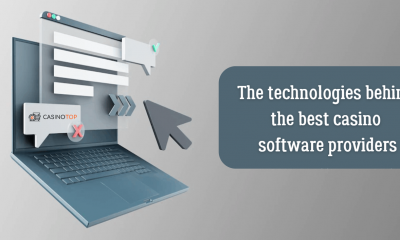The use of educational software can be considered as:
An important economic factor (reducing costs for solving complex educational problems); A factor in the development of students’ information competence and a means of career guidance (access to programs that differ in terms of functioning; the opportunity to study their internal structure); A factor in the development of civic consciousness (respect for the rights and freedoms of the individual).
Elearning software development is especially relevant today. It aims to increase the effectiveness of the educational process. If you are looking for an educational software development company that can provide you with high-quality eLearning software development services, contact JatApp.co. It hires qualified experts who are ready to implement any educational software solution within the established deadline. Read on and learn more about creating educational software for schools.
What Is Educational Software Development for Schools?
Educational software is a type of software designed to teach or develop certain skills. Accordingly, educational software development is an activity, the result of which is the creation of effective software for educational institutions. It includes the creation, design, deployment, and maintenance of computer programs.
Significance of E-learning Software Development in the Conditions of Informatization of Society
Under the influence of the informatization of society, there are significant changes in the mechanism of functioning and implementation of the school education system. Thus, high-quality software for schools initiates the following processes:
Improving the mechanisms for managing the education system based on the use of atomized data banks of scientific and pedagogical information, information and methodological materials, as well as communication networks; Improving the methodology and strategy for selecting the content, methods, and organizational forms of training that correspond to the tasks of developing the personality in the conditions of informatization of society; Creation of methodical training systems focused on the development of the intellectual potential of the student. These also contribute to the formation of skills to independently acquire knowledge, carry out experimental and research activities, and various types of joint activities for information processing; Creation and use of computer testing, diagnostic methods for monitoring and evaluating the level of knowledge of trainees, etc.
Educational Software Development Features
Educational software development is complex work requiring certain factors to be taken into account. The process of modern educational software development is focused on the life cycle of a software product. All currently existing technologies, methods, and standards directly or indirectly relate to or regulate the stages of the life cycle, both in terms of functionality and content. The process of developing software systems has a direct connection with the field of project management since any software product is a unique result. The main characteristics of the implementation of the software project directly depend on the organization of this process – deadlines, planned budget, and quality of the finished product. But professional project management by itself cannot ensure the achievement of the specified characteristics. System architecture, the experience of development team members, and documentation throughout the software life cycle play an important role. Therefore, it is better to entrust the work to a team of professionals. It should include project managers, business analysts, UI/UX designers, front-end and back-end engineers, QA specialists, programmers, testers, and writers. Give preference to educational software development companies with experience, such as Jatapp. Considerable experience in software development using various languages and platforms allows experts to create unique educational solutions of the highest quality.
Types of Solutions in Educational Software
Educational software can be created for different purposes. It can improve the educational process, student management, personnel management, facility management, financial management, etc. In this regard, there are many different educational software solutions. Here is a list of the most common software development ideas for schools:
Learning management; Student management; Facility management; Personnel management; Financial management; Educational administration software; E-learning application development; Learning experience platforms; Knowledge management solutions; Online training software; Tutorial software; Digital learning platforms; Assessment software, etc.
No matter what kind of development solutions you need, a professional e-learning software development company will surely be able to meet all requirements and provide you with reliable eLearning software development services. Learn about the educational software development life cycles in the section below.
Educational Software Development Life Cycles
The life cycle of the software is defined as a period of time that begins from the moment of making a decision to create the software and ends at the moment of its complete removal from the operation. The life cycle is divided into stages, during each of which a new version of the educational software product is created: At the first stage, basic requirements are usually determined. Their implementation makes it possible to obtain an acceptable solution to the problem: information processing time, processing cost, and probability of accidental and intentional errors. This contributes to a better understanding of the problem of compromise situations and the choice of the optimal solution. The description of the functions implemented on the computer takes place at the stage of establishing the specifications. The structure of input and output data is specified. Means of data placement and storage, organization and use of databases, etc., are also determined. The designing stage involves the development of algorithms according to the specifications. The general structure of the system is being formed. In the design process, the overall structure of the system is formed as the specifications for individual modules and submodules are fulfilled. The stage of coding is considered the simplest. Its implementation is facilitated by the use of high-level algorithmic languages, methods of structural, object-oriented programming, and CASE tools. The testing stage is usually carefully planned to reduce time and money costs. Data characteristics of the system in working condition are used for testing. It is important to determine them already at the design stage. Errors not found at the testing stage are corrected at the stage of operation and maintenance of the software complex. Changes proposed by the customer are made. The complex is being modified to adapt to new operating conditions. The process of developing software for schools is usually described by a model that defines the sequence of the most general stages and the obtained results. Currently, several main models of the software life cycle are known: the waterfall model, incremental model, spiral model, and evolutionary model (RAD). In addition, the paradigms of flexible development and extreme programming are widely used.
Conclusion
In modern conditions of digitalization of the economy, the existence of the educational sphere is impossible without the widespread use of new information technologies, including specialized software. There is a huge variety of software products for schools on the market designed to solve various kinds of problems. In addition, you can always contact trustworthy eLearning software companies and get the solution you need. Create effective educational software and reap the benefits! Comment * Name * Email * Website














